Crabs are such distinctive and strange-looking creatures. The fact that there are roughly 4500 species of crabs around the globe is intriguing. They are among the earliest living creatures on the planet, with research showing that they have existed for more than 200 million years. These animals, which are omnivores, are typically found along the coast. They come in a variety of sizes, depending on the species. Scientists have also noted that they are able to perceive and recall pain.

Let’s talk in more depth about these creepy yet cool crustaceans by unveiling 10 Incredible Crab Facts!
1. Some “Crabs” Are Not True Crabs
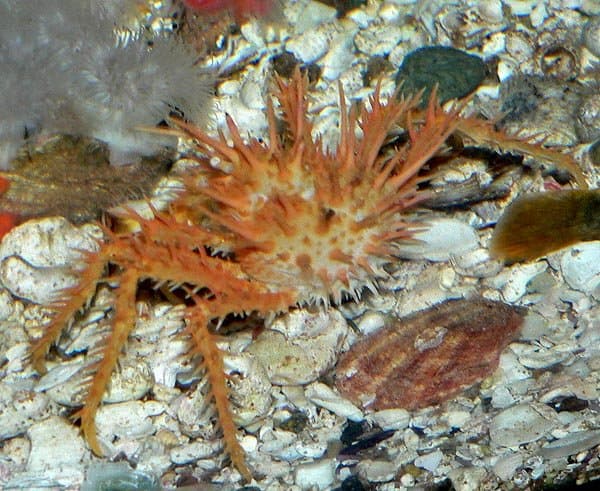
King crabs are classified as false crabs.
©Stan Shebs, CC BY-SA 3.0, via Wikimedia Commons – License
Crabs come in two varieties: true crabs and fake crabs. Brachyurans, or true crabs, have short abdomens and four pairs of long legs that they utilize to move about. Anomurans, often known as false crabs, have larger abdomens and fewer walking legs.
Crabs come in around 5,000 species, of which 4,500 are actual crabs, and 500 are fake crabs. Blue crabs, spider crabs, and snow crabs are a few instances of real crabs. Squat lobsters, king crabs, and hermit crabs are a few instances of false crabs. Some crabs, including king crabs, horseshoe crabs, hermit crabs, and porcelain crabs, are not considered true crabs even though they are classified as decapods.
2. Some Crabs Can Survive On Land And In Water
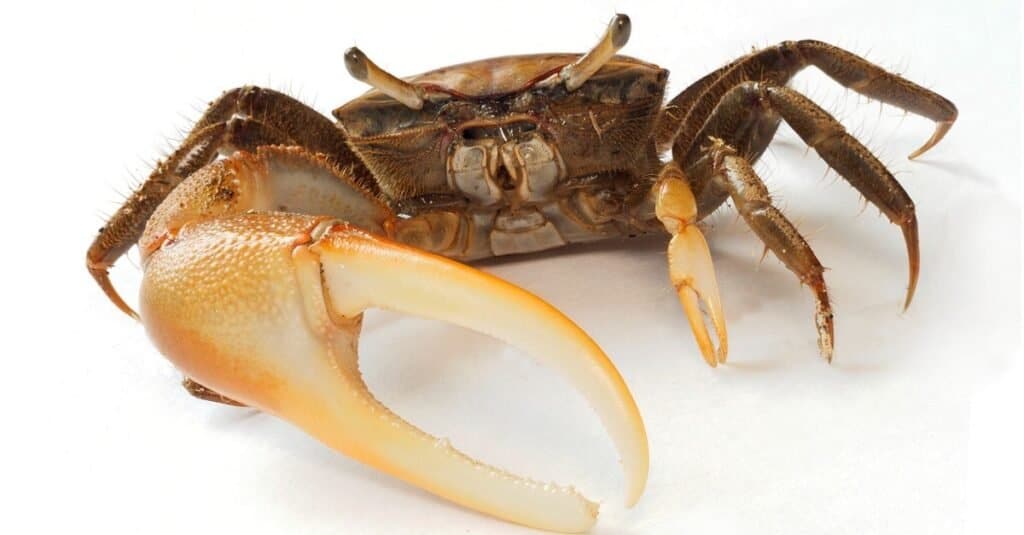
Fiddler crabs have gills and lungs.
©iStock.com/sdbower
There are many species of crab that can live on both lands and in water, despite having more physical similarities to prawns and lobsters than any other animal. The fiddler crab is one such example. It can accomplish this by possessing gills and lungs. If they can keep their gills moist, crabs can survive on land. They most often reside close to the coast for this primary reason.
3. Crabs Communicate Using Their Claws

Like some others in the animal kingdom, some crabs use their bodies to communicate to other crabs.
©Tory Kallman/Shutterstock.com
Stridulation is the process of making sounds by rubbing specific body parts together, such as when insects rub their legs together. Scientists have long known that crabs communicate by rubbing their legs together, as well as by rubbing unique ridges on their claws and arms together to make noise.
4. Female Crabs Lay Thousands Of Eggs At Once
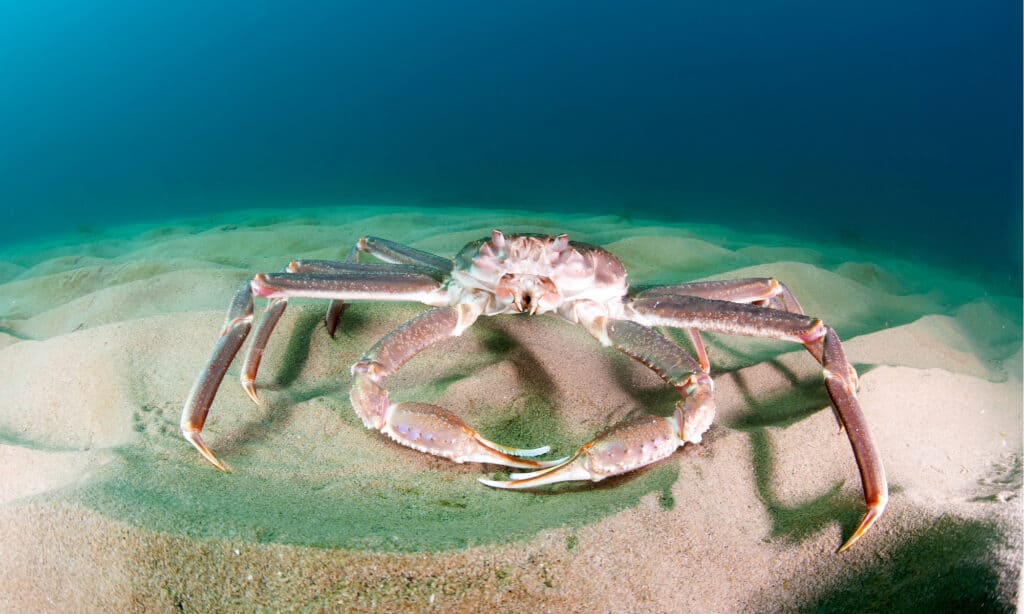
Female crabs lay a lot of eggs!
©Kondratuk Aleksei/Shutterstock.com
The female red crab keeps in eggs her abdominal sac and can lay up to 100,000. The fading moon signals the entry of females into the ocean. Females brace themselves at the water’s edge and release their eggs in what appears to be a dance.
5. A Crab’s Tooth Is In Its Stomach
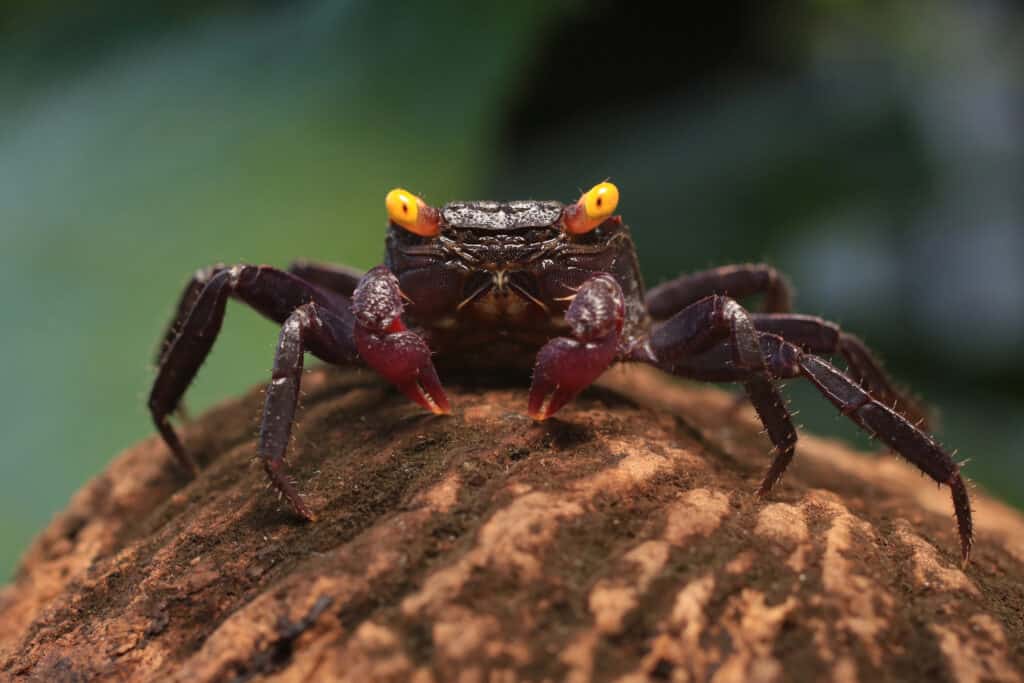
Crabs use teeth in their stomachs to help with digestion.
©Dan Olsen/Shutterstock.com
Here’s an incredible crab fact for you! Crabs and lobsters both have teeth in their stomachs. These are utilized to break down their food, but strangely enough, ghost crabs also use them to scare off predators by generating noise. Researchers in oceanography discovered that during hostile confrontations, Atlantic ghost crabs growl using teeth in their stomachs. It’s supposedly the first instance of an animal employing stomach noises as a form of communication.
6. Crabs Can Squeeze Through Tight Spaces
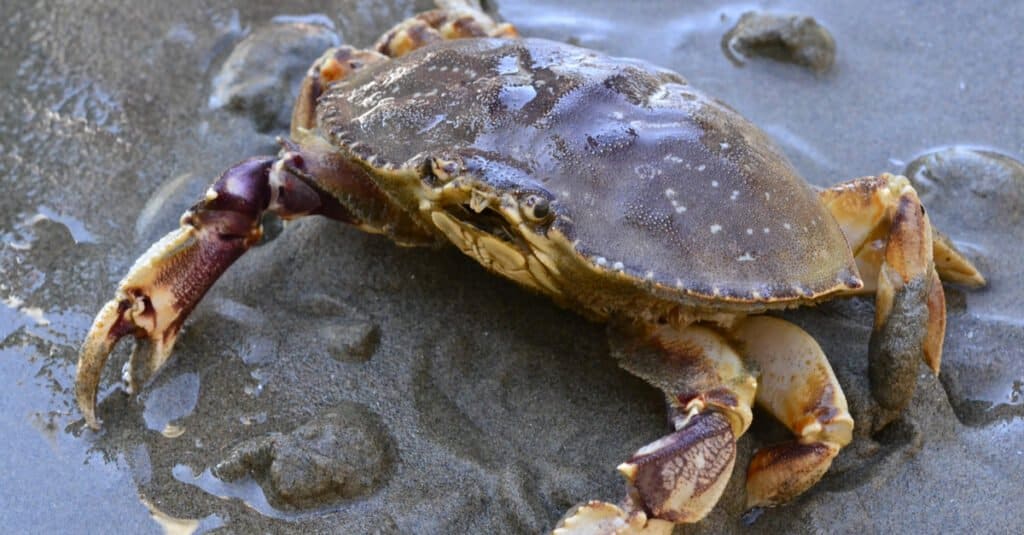
Using its flat shape as an advantage, crabs can escape predators.
©Jennifer Nicole Buchanan/Shutterstock.com
When danger approaches, crabs will dive into any nearby burrow to flee. They can find refuge in burrows during high tide. Most crabs have flat bodies, which make it easier for them to fit into tight spaces. For security, crabs tend to dig down far from view. They typically conceal themselves beneath flora or rocks, in cracks in the ground, or by burrowing into soft dirt and sand.
7. Crabs Have Unique Eyes
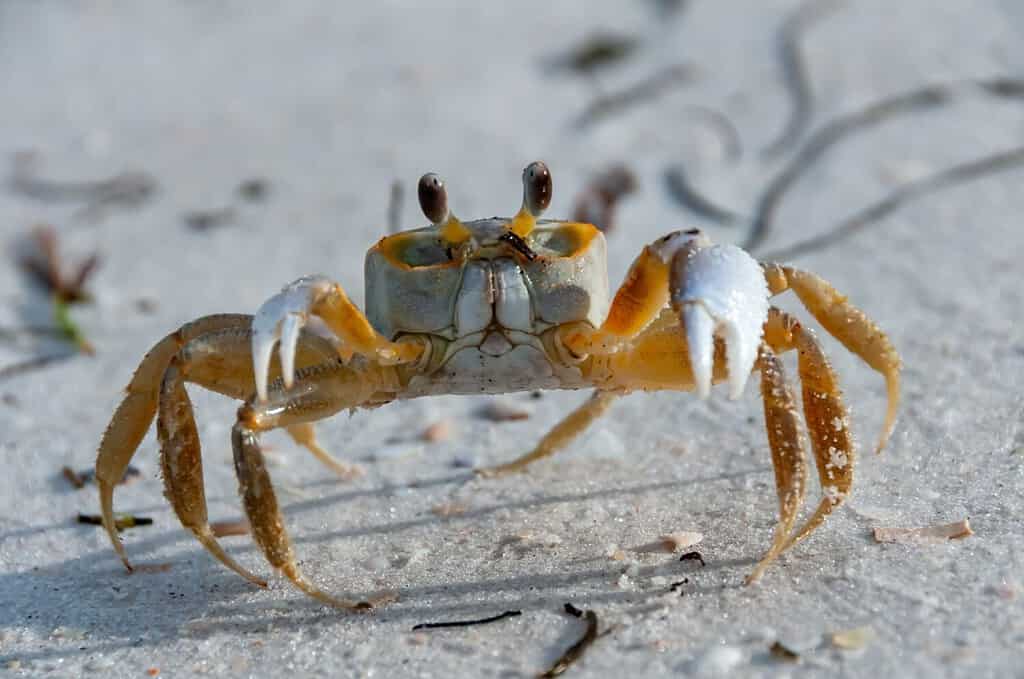
Crabs’ eyes are on stalks.
©Oleg Kovtun Hydrobio/Shutterstock.com
Dipolar polarization vision, a two-channel configuration in which horizontal and vertical photoreceptor cells are positioned perpendicular to one another, is a vision system used by crabs and other crustaceans. Despite having weak vision, they can discern between colors. Their eyes are situated on their stalks, almost like snails. Large compound eyes with hundreds of microscopic lenses make up crabs’ eyes.
8. Crabs Have Uniquely Structured Heads For A Reason
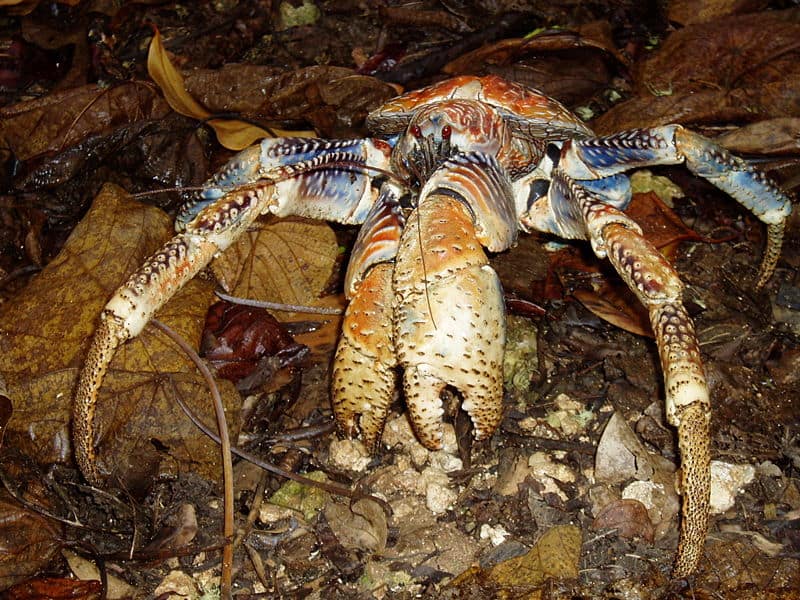
Crabs have maxillipeds on their head for feeding.
Although the head and thorax may combine to form a cephalothorax, crustaceans have three distinct body parts: the head, thorax, and abdomen. Three sets of mouthparts, one pair of compound eyes, and two pairs of antennae are all present on the head. All crab species have pairs of structures on their heads called maxillipeds that are mostly used for feeding.
9. The Skeleton Of a Crab Is On The Outside

A crab’s skeleton is basically inside out.
©Jennifer Nicole Buchanan/Shutterstock.com
The shell of a crab is its bones. Crabs display their skeletons on the exterior, just like spiders and insects do. A crab’s exoskeleton aids in its survival by giving it a sturdy shell to ward off predators and enhancing its muscular power.
With numerous places of muscle attachment, the exoskeleton, which is shared with other arthropods, protects against predators, desiccation, or waterlogging, both important for small organisms. But the exoskeleton also restricts how big arthropods can grow.
10. Crabs Can Regenerate Body Parts
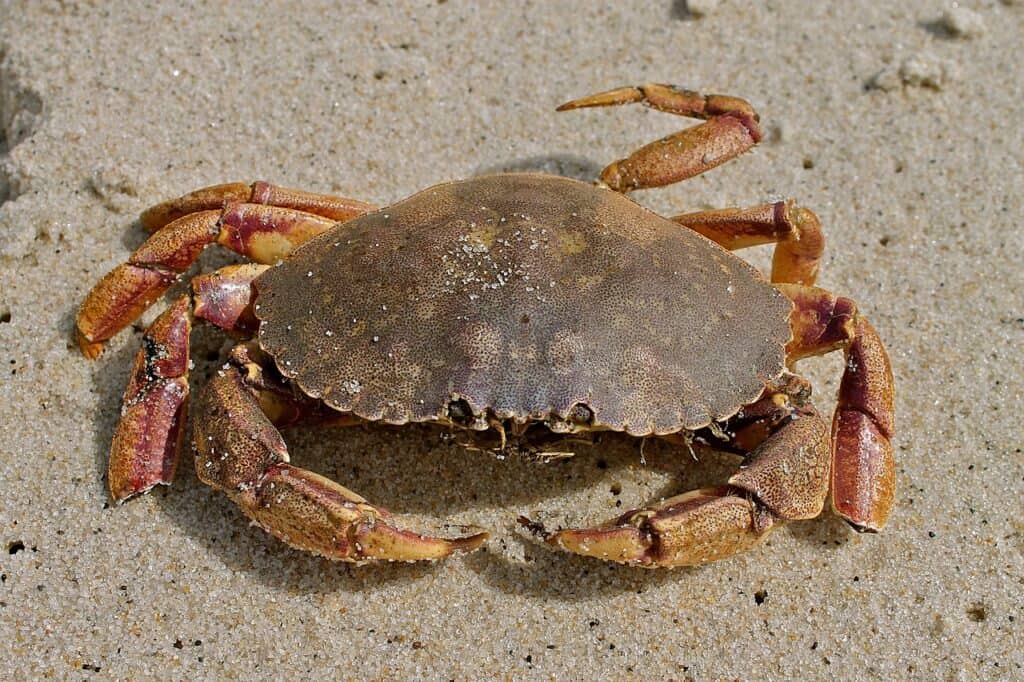
The crab can regenerate its limbs.
©U.S. Fish and Wildlife Service Northeast Region / Creative Commons – License
Every time a crab molts, the missing appendage can grow back. Due to the yearly molting of adult females in the fall and adult males in the winter, regeneration in adult crabs takes a year. The newly grown claws begin smaller than the original and progressively get bigger via succeeding molts. How’s that for 10 incredible crab facts?
The photo featured at the top of this post is © P. Dorman/Shutterstock.com
Thank you for reading! Have some feedback for us? Contact the AZ Animals editorial team.






